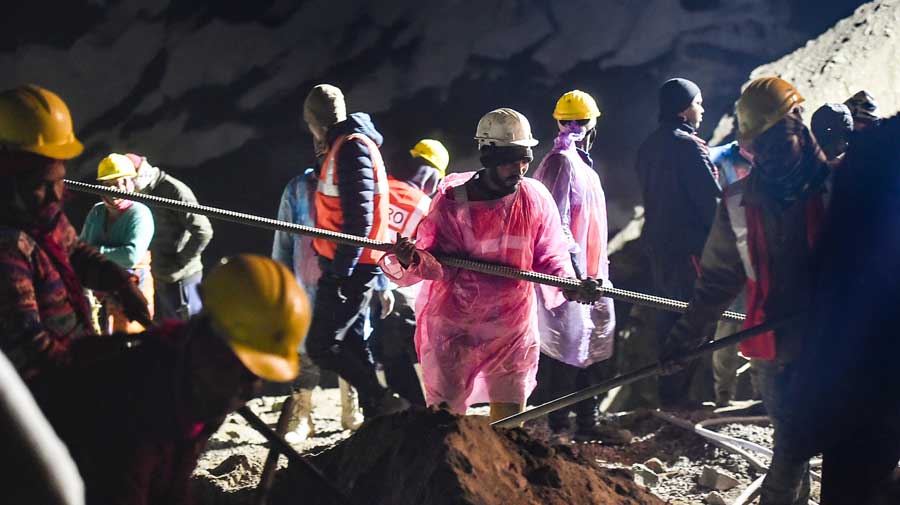
Uttarakhand: Trident behind glacial fragility -region’s vulnerability has increased under the impact of global warming and local development activities
Scientists say the region’s vulnerability has increased over the years under the impact of global warming and local development activities

Scientists are trying to determine the immediate trigger for the flash flood in Chamoli but, they say, the region’s vulnerability has increased over the years under the impact of global warming and local development activities.
The Alaknanda basin, the region of Sunday’s flash flood, had seven hydropower stations in operation, eight under construction and four proposed stations.
Mallika Bhanot, a volunteer with Ganga Avahaan, a citizens’ forum in Uttarakhand, has in a Twitter post described the Tapovan-Vishnugad and Vishnugad-Pippalkoti stations as “bumper-to-bumper HEP (hydroelectric power stations) on the Dhauliganga, a tributary affected by Sunday’s flash flood.
“Deforestation and loose soil can enhance the dust levels in the environment,” said a senior scientist. Scientists have known for years that soot particles called black carbon can be transported long distances by wind to the Himalayas where they can contribute to glacial melting.
Sections of environmental activists have expressed concern about the impacts of efforts to widen the Char Dham road, a 900km segment connecting four pilgrimage sites — Yamunotri, Gangotri, Kedarnath and Badrinath — with an all-weather road.
Over 500km of the road has already been widened and, Bhanot said, the project is expected to contribute to deforestation through the destruction of tens of thousands of trees and to dislodge several million cubic metres of soil.


0 Response to "Uttarakhand: Trident behind glacial fragility -region’s vulnerability has increased under the impact of global warming and local development activities"
Post a Comment
Disclaimer Note:
The views expressed in the articles published here are solely those of the author and do not necessarily reflect the official policy, position, or perspective of Kalimpong News or KalimNews. Kalimpong News and KalimNews disclaim all liability for the published or posted articles, news, and information and assume no responsibility for the accuracy or validity of the content.
Kalimpong News is a non-profit online news platform managed by KalimNews and operated under the Kalimpong Press Club.
Comment Policy:
We encourage respectful and constructive discussions. Please ensure decency while commenting and register with your email ID to participate.
Note: only a member of this blog may post a comment.